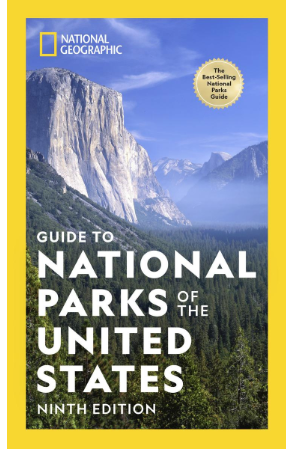The dunefield of Great Sand Dunes National Park and Preserve sprawls across more than 30 square miles. Among the peaks is Star Dune, towering 755 feet above the surrounding grasslands. Today, visitors from around the world come to visit the magical realm of the dunes.
Buy for $14.95
Some 11,000 years ago, the nomadic Clovis people roamed the region, hunting the herds of mammoths and prehistoric bison that grazed here. Later, the modern Ute and Jicarilla Apache tribes annually migrated through the area, also hunting and gathering. They collected the inner bark from ponderosa pines for food and medicine; more than 100 ponderosa pines in the park today still show evidence of bark-peeling.
Beginning in the 1600s Spanish explorers from settlements in New Mexico penetrated the region. Legend has it that a dying priest, Francisco Torres, mortally wounded by an arrow, uttered his last words as he looked up at the sunset-burnished mountains above the dunes: “Sangre de Cristo . . . Sangre de Cristo,” or Blood of Christ, thus giving the name to the mountain range towering above the dunes.
The first American to visit the Great Sand Dunes, it is believed, was Zebulon Pike, who in 1807 crossed the Sangre de Cristo Mountains from the east and was astonished by what he saw; in his journal he wrote of the dunes, “Their appearance was exactly that of a sea in a storm.” By the late 1800s, settlers and miners populated the San Luis Valley and western flank of the Sangre de Cristos.
In the 1920s, mining firms began to follow up on the idea of processing the sands of the Great Sand Dunes for gold. Concerned about the possible destruction of the dunes, local residents petitioned Congress to protect them. In 1932, President Herbert Hoover signed a bill creating the Great Sand Dunes National Monument.
In 2000, 41,686 acres east and northeast of the dunefield were added, creating the national preserve, and the boundary was also expanded to the west to take in an additional 69,240 acres of sand deposits. By 2004, a large portion of these lands had been acquired by the U.S. government. These additional diverse lands are what allowed Congress to expand the small national monument into a large national park and preserve.
he region’s geology and biology make Great Sand Dunes a fascinating place, unique among America’s national parks, a place where winds that can top 40 miles an hour slowly reshape the crests of the tall dunes, and smaller dunes may “migrate” several feet in a week.
How to Visit
The Dunefield is the highlight of any visit to Great Sand Dunes National Park and Preserve. Climbing, sliding, rolling, sandboarding, and sand sledding in the dunes is a unique experience. If your time is very limited, plan on a half-day visit that includes an hour at the visitor center and a few hours in the dunes themselves. A full day or two, however, allows for a more fulfilling exploration of the park. You’ll have time, for one, to experience the Medano Creek area, wonderful for children who enjoy playing in wet sand. Broad and shallow from April to June, Medano Creek flows along the east side of the dunes.
Several hiking trails climb high into the forests and peaks of the Sangre de Cristos. The 0.5-mile Montville Nature Trail and 3.5-mile Mosca Pass Trail climb into the Sangre de Cristo Mountains and offer a lushly forested counterpoint to navigating the great dunes below
If you have a high-clearance, four-wheel-drive vehicle and a strong sense of adventure, consider driving the Medano Pass Primitive Road. It heads to the crest of the Sangre de Cristos at Medano Pass, an elevation of 9,982 feet. The trailhead for the 3.8-mile Medano Lake Trail is along this road.
Useful Information
How to get there
U.S. 160 runs east–west through southern Colorado. From Walsenburg (at the junction with I-25) follow U.S. 160 west for 59 miles to Colo. 150. Head north on Colo. 150 for 16 miles to the park entrance. From Alamosa, follow U.S. 160 east for 14 miles and turn north on Colo. 150.
When to go
The park is open year-round. Spring weather ranges from mild and sunny to snowy and windy. The flow in Medano Creek peaks in late May. Summer has warm days and cool nights. Late summer can bring afternoon thunderstorms. Fall colors peak in late Sept. or early Oct. Winter days are chilly and often sunny. Snow decks the Sangre de Cristo Mountains and sometime blankets the dunes, creating a stunning landscape.
Visitor Center
The Great Sand Dunes National Park and Preserve Visitor Center is just a couple of miles inside the park boundary.
Headquarters
11500 Highway 150 Mosca, CO 81146 nps.gov/grsa 719-378-6300
Camping
The park has three campgrounds (176 sites total). In addition there are 18 roadside camping sites along the Medano Creek Primitive Road accessible only by high-clearance, four-wheel-drive vehicles. Backcountry camping is permitted; information and permits can be obtained at the visitor center.
Lodging
There are no lodging options in the park. The Great Sand Dunes Lodge (gsdlodge.com; 719-378-2900) is a mile south of the park entrance on Colo. 150. The nearest town is Alamosa (alamosa .org), about 30 miles southwest of the park on Colo. 160.
US National Parks Map
About the Guide



